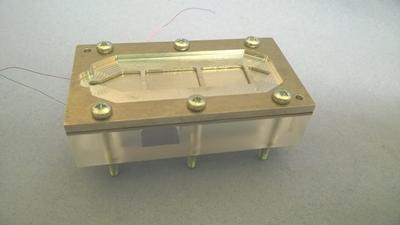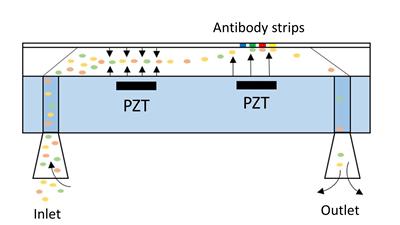Poor water quality is a serious issue – up to 850,000 people die every year from unsafe water supplies, where most of these deaths occur in developing countries. A key component in minimising the number of deaths is early detection of hazardous, or even deadly, pathogens that end up growing in the water supplies.
Currently the methods range from cheap and robust, but slow (culture dishes can detect very low concentrations of bacteria but take up to two weeks), to fast, but expensive and complicated to use.
The device that is proposed in this project creates ultrasonic standing waves inside a thin fluid channel and uses them to push the pathogens onto an antibody coated surface where they are captured. Once captured they can then be analysed quickly and the results would then be given instantaneously.


This device is set out to be a cheap, robust, and easy-to-use alternative to the currently available methods. In theory, one would be able to use it to continuously monitor the state of a body of water. Currently, the project is in the focusing and capturing stage, and will develop a portable and effective detection stage afterwards.
We are looking at using the same technology to accelerate the identification of bacteria in samples taken from patients to allow early use of targeted antibiotics.
NAMRIP Member Filip Plazonic, Faculty of Engineering and the Evironment